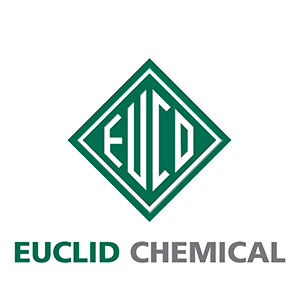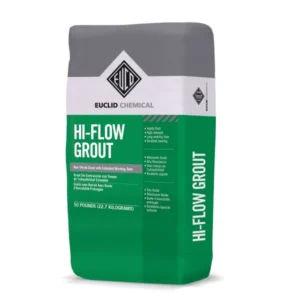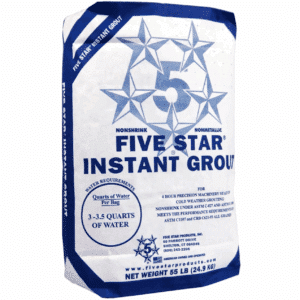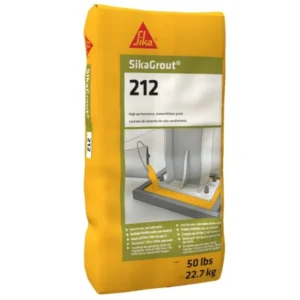Standard Strength
Standard strength cement grouts offer reliable, versatile performance for a wide range of construction and industrial applications where moderate compressive strength under 10,000 psi meets project requirements. These cementitious grouts excel in general-purpose grouting applications including equipment base plates, anchor bolts, bearing pads, column bases, and structural connections where extreme loads aren’t a primary concern. Available in various formulations including non-shrink, high-flow, underwater, and specialty mixes, standard strength grouts provide excellent flowability and workability while maintaining dimensional stability during curing. Their balanced performance characteristics make them ideal for precast connections, cable grouting, dry pack applications, and tremie placement methods, delivering dependable results without the premium cost of ultra-high-strength alternatives. Whether you’re working on routine maintenance projects, new construction, or rehabilitation work, standard strength grouts provide the proven durability and consistent performance that contractors and engineers trust for achieving long-lasting, structurally sound installations that meet industry standards and specifications.
Showing 1–16 of 26 results
Showing 1–16 of 26 results
What is Cement Grout? Complete Guide to Standard Strength Cementitious Grouts
Cement grout is a versatile construction material consisting of Portland cement, water, fine aggregates, and specialized additives that creates high-strength bonds for equipment bases, structural connections, and void filling applications. Standard strength cement grouts, achieving compressive strengths under 10,000 psi, provide reliable performance for anchoring, grouting, and load-bearing applications in commercial construction, industrial facilities, and infrastructure projects. Unlike conventional concrete, cementitious grout features superior flowability and non-shrink properties that enable complete filling of confined spaces, irregular voids, and narrow clearances while developing exceptional bond strength and durability.
How Cement Grout Works: Composition and Properties of Cementitious Grouts
Portland cement grout achieves its strength through hydraulic cement hydration, transforming from a flowable slurry to solid material with compressive strengths ranging from 2,000 to 10,000 psi for standard formulations. Non-shrink cement grouts incorporate expansion agents, plasticizers, and supplementary cementitious materials including fly ash, silica fume, and slag cement to enhance workability, durability, and dimensional stability. High-flow grout formulations achieve fluid consistencies for gravity placement, while dry-pack grouts provide stiff consistencies for mechanical consolidation in confined spaces. Rapid-setting cement grouts accelerate strength gain for time-critical applications, underwater grouts resist washout during submerged placement, and pre-mixed grouts ensure consistent quality for precision grouting applications.
Types of Cement Grout: Non-Shrink, High-Flow, and Specialty Formulations
Standard strength cement grouts under 10,000 psi encompass multiple specialized formulations for diverse grouting applications. Non-shrink grout prevents volume reduction during curing through controlled expansion, ensuring full contact for equipment bases, column base plates, and bearing pads. High-flow cement grout achieves self-leveling consistency for deep pours, complex geometries, and extended placement distances without segregation. Underwater grout maintains cohesion and develops specified strength when placed directly in water for marine construction, bridge piers, and submerged repairs. Rapid-set grout achieves early strength for emergency repairs, traffic-bearing applications, and time-sensitive installations. Cable grout and post-tensioning grout protect prestressing steel from corrosion while transferring loads in bridges and parking structures. Dry-pack grout provides maximum density for precision shimming, void filling, and confined space applications where flowable grout cannot be used.
Common Applications for Standard Strength Cement Grout
Equipment Base Grouting and Machine Foundation Grout: Precision equipment grouting creates rigid, vibration-resistant foundations for rotating machinery, compressors, pumps, turbines, generators, and manufacturing equipment. Non-shrink cementitious grout fills the critical space between equipment base plates and concrete foundations, transferring static and dynamic loads while maintaining precise alignment tolerances. Standard strength grouts provide adequate compressive strength for most industrial equipment without the premium cost of high-strength formulations.
Anchor Bolt Grouting and Structural Steel Connections: Cement-based anchor grout secures threaded rods, anchor bolts, rebar dowels, and hold-down bolts in drilled holes for structural steel columns, equipment attachments, and seismic retrofitting. Column base plate grouting ensures full bearing contact for structural steel frames, preventing stress concentrations and progressive deterioration. Shear key grouting and blockout grouting create monolithic connections in precast concrete construction, tilt-up panels, and modular building systems.
Infrastructure and Bridge Construction Grouting: Post-tensioned cable grout protects prestressing tendons while transferring forces in bridges, parking garages, and elevated slabs. Bearing pad grout distributes loads from bridge girders to substructures while accommodating thermal movements. Precast grout and closure pour grout join prefabricated elements in tunnels, culverts, and modular bridge construction. Void grouting fills annular spaces, abandoned utilities, and subsurface cavities to prevent settlement and restore structural integrity.
When to Use Standard Strength Cement Grout vs High-Strength Grout
Standard strength cement grouts under 10,000 psi suit most construction applications where extreme loads are not present. Equipment bases for HVAC systems, standard pumps, conveyors, and light manufacturing machinery perform excellently with 5,000-8,000 psi grouts. Building columns, structural steel connections, and anchor bolts in commercial construction typically specify 6,000-8,000 psi grouts for adequate safety factors. Precast concrete connections, utility vaults, and infrastructure repairs achieve design requirements with standard strength formulations.
High-strength grouts exceeding 10,000 psi become necessary for heavy industrial equipment, high-speed turbines, forge hammers, and extreme dynamic loads. Critical infrastructure including nuclear facilities, offshore platforms, and high-rise foundations may require ultra-high-strength grouts. However, specifying excessive strength increases material costs, reduces working time, and complicates placement without providing additional benefits for typical applications.
How to Install Cement Grout: Best Practices for Grouting Applications
Surface Preparation for Cement Grouting: Concrete surfaces require roughening to 1/4-inch amplitude, removal of laitance, oil, and contaminants, plus saturation with water for 24 hours before grouting. Steel base plates need cleaning to remove mill scale, rust, and coatings that prevent bonding. Anchor holes require drilling to specified depths, cleaning with compressed air, and flushing to remove drilling debris.
Mixing Cementitious Grout Properly: Mechanical mixing with drill-mounted paddles or mortar mixers ensures uniform consistency without lumps or unmixed material. Water additions follow manufacturer specifications precisely, avoiding excess water that reduces strength and increases shrinkage. Mixing continues for 3-5 minutes until achieving uniform color and flowable consistency suitable for placement methods.
Placement Techniques for Different Grout Types: Flowable grouts require continuous pouring from one side to prevent air entrapment, maintaining 2-inch minimum head pressure for complete filling. Pump grouting forces material through hoses for deep pours, confined spaces, and overhead applications. Dry-pack placement involves ramming stiff grout in 1-inch layers, achieving 95% compaction for maximum strength and minimal shrinkage.
Curing Cement Grout for Maximum Strength: Continuous wet curing for 7 days optimizes strength development and minimizes shrinkage cracking in standard cement grouts. Curing compounds, wet burlap, or plastic sheeting maintain moisture during critical early hydration periods. Cold weather requires insulation and supplemental heat to maintain 50°F minimum temperature, while hot weather necessitates cooling, shading, and extended curing to prevent rapid moisture loss.
Advantages of Using Standard Strength Cement Grout
Cost-Effective Performance: Standard strength formulations cost 30-50% less than high-strength alternatives while meeting requirements for most applications. Readily available materials and familiar installation procedures reduce project costs and scheduling complications. Local suppliers stock standard grouts, eliminating special orders and extended lead times.
Versatile Application Methods: Multiple consistency options accommodate various placement techniques from pumping to dry-packing. Extended working times allow proper placement without rushing, reducing installation errors and rework. Adjustable flow characteristics suit different clearances, access limitations, and project requirements.
Proven Long-Term Durability: Decades of successful installations demonstrate reliability in diverse environments and loading conditions. Resistance to chemicals, freeze-thaw cycles, and environmental exposure ensures 50+ year service life. Compatible with concrete and steel substrates without special primers or bonding agents.
Non-Shrink Properties Ensure Full Contact: Controlled expansion during plastic state compensates for normal settlement and shrinkage. Complete filling of voids eliminates stress concentrations and progressive deterioration. Maintains dimensional stability throughout service life without cracking or debonding.
Specifications and Testing for Cement Grout
ASTM Standards for Cementitious Grouts: ASTM C1107 provides specifications for packaged dry hydraulic-cement grout including non-shrink varieties. Compressive strength testing follows ASTM C109 using 2-inch cubes at 1, 3, 7, and 28 days. Flow testing per ASTM C939 determines consistency for quality control and placement verification. Volume change testing according to ASTM C1090 confirms non-shrink properties and dimensional stability.
Project Specifications for Standard Strength Grout: Typical specifications require 5,000-8,000 psi at 28 days for equipment bases and structural connections. Flow consistency of 20-30 seconds ensures proper placement while maintaining stability. Maximum aggregate size of 3/8-inch suits most clearances while providing economy. Chloride limits protect reinforcement from corrosion in structural applications.
Field Testing and Quality Control: Flow cone tests verify consistency before placement, ensuring proper fluidity for complete filling. Temperature monitoring of grout, substrate, and ambient conditions prevents hot or cold weather problems. Test cubes cast during placement confirm specified strength development. Height measurements document non-shrink performance and dimensional stability.
Troubleshooting Common Cement Grout Problems
Preventing Shrinkage Cracks: Using non-shrink formulations eliminates drying shrinkage and settlement issues. Proper water-cement ratios prevent excess bleed water and subsequent shrinkage. Adequate curing maintains moisture for complete hydration without premature drying.
Avoiding Air Voids and Incomplete Filling: Continuous placement from one side allows air escape through opposite vents. Sufficient head pressure and proper flow consistency ensure complete space filling. Rodding or vibration releases entrapped air in thick placements.
Addressing Slow Strength Gain: Maintaining proper curing temperatures accelerates hydration and strength development. Using Type III high-early cement or accelerators speeds strength gain when needed. Protecting grout from freezing prevents permanent strength loss.
Selecting the Right Cement Grout for Your Project
Evaluating Load Requirements: Static loads from equipment weight and operational forces determine minimum strength requirements. Dynamic loads from vibration, impact, and cyclic forces influence grout selection and thickness. Safety factors of 2-3 times working loads provide adequate design margins.
Considering Environmental Conditions: Chemical exposure from process fluids, cleaning agents, or groundwater affects formulation choice. Temperature extremes during installation and service influence material selection and procedures. Moisture conditions including underwater placement require specialized grout types.
Installation Constraints and Access: Limited clearances may require high-flow grouts for complete filling without voids. Overhead or vertical applications need thixotropic grouts that resist sagging. Time constraints for return to service may necessitate rapid-setting formulations.
Cement Grout vs Other Grouting Materials
Cement Grout vs Epoxy Grout: Cement grouts cost significantly less than epoxy while providing adequate strength for most applications. Epoxy grouts offer higher strength, chemical resistance, and faster curing for specialized requirements. Standard cement grouts suit normal environments, while epoxy excels in aggressive chemical exposure.
Cement Grout vs Polyurethane Grout: Cementitious grouts provide structural support and load transfer for equipment and connections. Polyurethane grouts primarily seal water infiltration and stabilize soils without structural capacity. Cement grouts develop rigid support, while polyurethane remains flexible for crack sealing.
Future Trends in Cement Grout Technology
Self-consolidating grouts eliminate vibration requirements through optimized rheology and admixtures. Fiber-reinforced grouts improve crack resistance and toughness for dynamic loading applications. Sustainable formulations incorporating recycled materials and reduced cement content lower environmental impact. Smart grouts with embedded sensors monitor structural health and detect deterioration. Rapid-strength developments achieve 3,000 psi in 3 hours for emergency repairs and accelerated construction schedules.
Frequently Asked Questions About Standard Strength Cement Grout
What is the typical compressive strength of standard cement grout? Standard strength cement grouts achieve 5,000 to 10,000 psi at 28 days, suitable for most construction applications including equipment bases, anchor bolts, and structural connections.
How long does cement grout take to cure? Initial set occurs in 4-6 hours, with 3,000-5,000 psi strength in 24 hours for most formulations. Full 28-day strength develops through continued hydration, reaching specified values with proper curing.
Can cement grout be used underwater? Specialized underwater cement grouts resist washout during placement, maintaining cohesion and developing full strength when placed directly in water for marine and submerged applications.
What is non-shrink cement grout? Non-shrink grouts incorporate expansion agents that compensate for normal shrinkage during curing, ensuring complete contact and load transfer without voids or separation from substrates.
How thick can cement grout be placed? Single lifts typically range from 1/2 inch to 6 inches depending on formulation and aggregate size. Deep pours exceeding 6 inches may require extended formulations or multiple lifts to control heat generation.
Standard Strength Cement Grout for Reliable Performance
Standard strength cement grouts under 10,000 psi provide economical, reliable solutions for equipment grouting, structural connections, and infrastructure applications. Non-shrink formulations ensure complete void filling and lasting performance, while specialized varieties including high-flow, underwater, and rapid-set grouts address specific project requirements. Proper selection, installation, and curing of cementitious grouts creates durable connections that transfer loads and maintain alignment throughout decades of service. Understanding cement grout properties, applications, and best practices enables successful project completion while optimizing costs and long-term performance.











